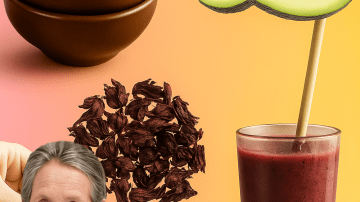Ever scoop the luscious orange flesh of a papaya, savor its tropical sweetness, and then toss the slick black seeds without a second thought? You’re not alone. But what if those glossy pearls—peppery, aromatic, and packed with bioactive compounds—were the most intriguing part of the fruit? What if they could support comfortable digestion, add a bold, gourmet twist to your meals, and offer promising antioxidant benefits? Keep reading and you’ll learn how to prepare, use, and enjoy papaya seeds safely and deliciously, while separating hype from what research actually suggests.

🌟 Why This Matters Now
You want simple, real-food upgrades that fit into everyday life. Papaya seeds deliver exactly that. They’re easy to use, naturally flavorful, and versatile enough to sprinkle, sip, or blend. Their spicy profile is reminiscent of black pepper, turning routine meals into functional food moments without complicated recipes or expensive add-ons.
💡 Quick take: Think of papaya seeds as a culinary accent with potential wellness perks—best used consistently, in small amounts, as part of a balanced diet.
🥄 Meet the Seed: Small Size, Big Personality
Papaya seeds are firm, peppery, and slightly bitter. Inside, they contain enzymes, polyphenols, and other phytochemicals that lend the seed its distinctive aroma and bite. That punchy flavor makes them perfect for seasoning eggs, salads, grilled proteins, roasted vegetables, and even morning smoothies. If black pepper is your go-to, ground papaya seed can be a clever swap in many dishes.
🔥 Potential Benefits Backed by Emerging Evidence
✅ Important note: Nutrition science evolves. The points below summarize what early research and traditional use suggest. They are not a diagnosis or a treatment plan. If you have a health condition, are pregnant or breastfeeding, or take medication, talk with a clinician before adding new concentrated foods or botanicals.
🧠 Digestive Support You Can Feel
Papaya is famous for papain, a proteolytic enzyme best known in the fruit. Seeds also contain enzymes and fiber that can complement normal digestion. Many people like a few seeds with meals they find heavy or protein-rich. The fiber helps keep things moving comfortably, while the peppery bite can stimulate the palate and make simple food more satisfying.
🛡️ Antimicrobial and Antioxidant Promise
Early lab work shows papaya seed compounds can act against certain bacteria and contribute antioxidants. In daily life, that means they may be a flavorful way to round out an already-healthy pattern—think fruits, vegetables, legumes, quality proteins, and healthy fats—rather than a magic bullet.
🌿 Liver and Kidney Support Signals
Animal and test-tube studies have explored how seed extracts might help buffer oxidative stress. Translating that into human daily use requires caution and time, but it’s one more reason to consider seeds as a modest, whole-food accent in a lifestyle that already prioritizes hydration, sleep, and nutrient-dense eating.
🧯 Calming the “Slow Burn” of Everyday Inflammation
Polyphenols and isothiocyanates found in papaya seeds are being studied for their anti-inflammatory properties. Diets rich in plant compounds and spices are associated with better long-term health outcomes. Papaya seeds can play a small, tasty part in that bigger picture.
🦠 What About Parasites?
You might see bold claims online. Some traditional practices use papaya seeds for gut pests, and early findings are interesting, but medical evaluation is still essential. If you suspect a parasite, consult a healthcare professional for proper testing and treatment. Consider seeds a culinary add-on, not a substitute for care.
🎯 Weight and Metabolic Goals
Because the seeds are bold and peppery, they can make meals feel more satisfying, which may help some people curb extra shakes of salt, sugar, or heavy dressings. That sensory “kick” can be useful when you’re shaping a sustainable, flavorful way of eating.
🧪 Safety First: Smart Use for Real Life
⚠️ Start low, go slow. See how your body responds.
• 😊 Begin with just a few seeds alongside a meal and notice how you feel over the next day.
• 🥛 If your stomach is sensitive, take them with food rather than on an empty stomach.
• 👶 Children, pregnant or breastfeeding individuals, and anyone with GI conditions or on medications should speak with a clinician first.
• 🚫 Stop if you experience persistent discomfort, allergic reactions, or changes that concern you.
🍽️ Four Delicious, Practical Ways to Use Papaya Seeds
✨ 1) Chew a Few Fresh Seeds
Scoop them from a ripe papaya, rinse briefly, and chew 5 to 7 seeds with or after a meal. They’re peppery and aromatic. If the taste feels intense, pair with a bite of fruit to balance the heat.
✨ 2) Make a Ground “Pepper”
Rinse the seeds and pat dry. Air-dry on a plate in a breezy spot until crisp, then pulse in a spice grinder. Store the powder in a sealed jar away from heat and light. Use it as you would black pepper on avocado toast, eggs, grilled chicken, pan-seared tofu, soups, or roasted vegetables.
✨ 3) Blend into Smoothies
A teaspoon of fresh or dried seeds disappears easily into tropical blends. Try mango, banana, pineapple, spinach, coconut water, and a squeeze of lime. The spicy undertone is often subtle in smoothies yet adds complexity.
✨ 4) Brew a Gentle Seed Tea
Rinse 1 to 2 tablespoons of seeds, simmer in a cup of water for 5 to 10 minutes, then strain. Enjoy warm after a meal or chill for an afternoon refresher. A drizzle of honey or a slice of ginger can round out the flavor.

🛠️ Pro Prep and Storage Tips
• 🥇 Choose fully ripe papayas. The blacker and glossier the seeds, the better the flavor and texture.
• 🚿 Rinse thoroughly to remove sticky pulp, then drain well to avoid clumping.
• 🌬️ For grinding, dry the seeds fully so they powder cleanly and store longer.
• ❄️ Keep fresh seeds in the refrigerator for up to a week in an airtight container.
• 🧊 Freeze extras: portion seeds into ice cube trays with a little water. Pop a cube into your next smoothie.
• 🌑 Store ground seed powder in a cool, dark cupboard. Use within a few months for best aroma.
📅 A Simple 30-Day Papaya Seed Plan
🎯 Goal: Build an easy, enjoyable habit—not a strict regimen.
Week 1
• 😊 Add a few fresh seeds with lunch or dinner three to four days this week.
• 📝 Note how the flavor pairs with your meals and how your stomach feels.
Week 2
• 🧂 Prepare a small jar of ground seed “pepper.”
• 🍳 Use a light sprinkle once a day on eggs, salads, or cooked vegetables.
Week 3
• 🍵 Brew seed tea two to three evenings this week.
• 💤 See how it fits your wind-down routine and whether you prefer it warm or chilled.
Week 4
• 🧪 Mix and match: a sprinkle of powder at lunch, a few fresh seeds with dinner, tea on a couple of nights.
• 📓 Track subtle changes like meal satisfaction, regularity, or how often you reach for heavy sauces.
By the end of thirty days, you’ll know exactly which form you enjoy most and how to fold it into your lifestyle without effort.
👩🍳 Fast Flavor Pairings to Try
• 🥑 Avocado toast with lime, chili flakes, and a light dusting of ground papaya seed
• 🥗 Citrus kale salad with olive oil, sea salt, and a finishing sprinkle of seed powder
• 🍳 Soft-scrambled eggs with herbs, cherry tomatoes, and a pinch of ground seed
• 🥕 Roasted carrots or sweet potatoes finished with tahini, lemon, and seed “pepper”
• 🍲 Coconut curry soup topped with fresh herbs and a tiny crack of ground seed for warmth
❓ Frequently Asked Questions
Can I swallow the seeds whole?
• You can, but chewing or lightly grinding enhances flavor and surface area for better culinary experience. Whole seeds may pass through with minimal impact on taste.
Are green, unripe seeds okay?
• Ripe seeds taste better and are generally preferred for kitchen use. Unripe seeds can be harsher in flavor and may be more irritating for sensitive stomachs.
How much is too much?
• More isn’t always better. A small, consistent amount goes a long way. Begin with just a few seeds or a light sprinkle of powder and see how you feel over time.
Can papaya seeds replace medical treatment?
• No. They’re a food, not a medicine. If you suspect any health issue—from parasites to liver concerns—seek medical testing and guidance. Use seeds as a culinary accent within professional recommendations.
Do they taste exactly like black pepper?
• Similar, but not identical. Papaya seed has a deeper, slightly bitter note that many people find sophisticated and addictive in savory dishes.
🧭 How to Use Papaya Seeds Intentionally
• 🎨 Treat them as a finishing spice, like a chef’s flourish at the end of cooking.
• 🧂 Use a pinch, taste, and adjust—just as you would with chili or pepper.
• 🥗 Layer flavors: acid from citrus, richness from olive oil, and the warm bite of ground seed create restaurant-level depth.
• 🔁 Consistency beats intensity: a little most days is more sustainable than a lot once in a while.
⚠️ Who Should Be Extra Careful
• 🤰 Pregnant or breastfeeding individuals should avoid concentrated use unless a clinician says otherwise.
• 💊 Anyone on regular medication or with a diagnosed condition should check for potential interactions.
• 👶 Children should only try small amounts with a professional’s guidance.
• 🤧 If you’re allergic to papaya or latex, steer clear and consult a clinician.
🌱 The Takeaway: A Tiny Seed with Big Culinary Impact
Papaya seeds won’t replace a balanced diet, movement, rest, and medical care. But they can absolutely elevate the way you eat—bringing a peppery spark, intriguing aroma, and a handful of promising plant compounds to your table. Used thoughtfully, they help you enjoy meals more, explore new flavors, and build small, sustainable habits that support overall well-being.
🍽️ Next time you slice a ripe papaya, pause before you toss the seeds. Rinse a few, taste them, and sprinkle a pinch on something simple—eggs, greens, grilled tofu, or warm rice. Let that bold, pepper-like bite surprise you. Keep experimenting for a month and see what sticks. Your kitchen will feel more creative, your meals more satisfying, and your routine more aligned with the kind of nourishment that lasts.






